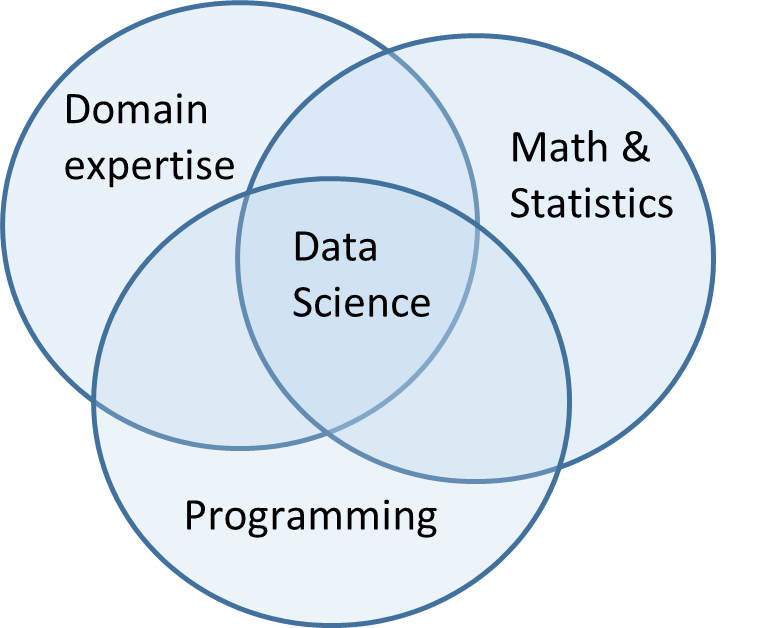Section 5.1 Data Science
Subsection 5.1.1 What is data science?
Data science is a broad field that incorporates a variety of other subjects and can be applied almost anywhere, though traditionally it has most often been used in industry. It is a field of study that combines domain expertise, programming skills, and knowledge of mathematics and statistics to extract meaningful insights from data. Typically, domain expertise refers to advance knowledge of the type of business or organization that is hoping to benefit from analyzing data. Skills in programming are part of the broader category of Computer Science.

There are many fields of study that fall within the umbrella of Data Science. One of these is machine learning (ML), which is the use of algorithms (or step-by-step processes) designed to “learn” from existing data in order to uncover insights, identify relationships and make predictions about future trends.
To understand how these ideas fit together and learn what data scientists do, check out this video (5:19).
1
www.youtube.com/watch?v=uswU1s3M2VE&ab_channel=365DataScienceSubsection 5.1.2 Why data science is important
As technology has advanced, our society has been inundated with data. The volume and variety of data that is available can be overwhelming. Data science techniques are used to manage the data, organizing and assembling it in ways that help ensure businesses can remain viable and competitive in today’s market. Regardless of size or industry, organizations that do not utilize data science strategies run the risk of getting left behind.
Many tools have been created to help people learn about data science. One such tool designed to give beginners a taste of what it means to manage and draw inferences from sets of data is the Common Online Data Analysis Platform.
Subsubsection 5.1.2.1 Common Online Data Analysis Platform (CODAP)
CODAP is a relatively easy-to-use data analysis environment that can be used in a wide variety of educational settings. Specifically, it can be used in classrooms to help students summarize, visualize, and interpret data, advancing their skills to use data as evidence to support a claim. If you wish to seek additional help, there are some videos and tutorials on how to use CODAP on their homepage here.
2
codap.concord.org/help/
